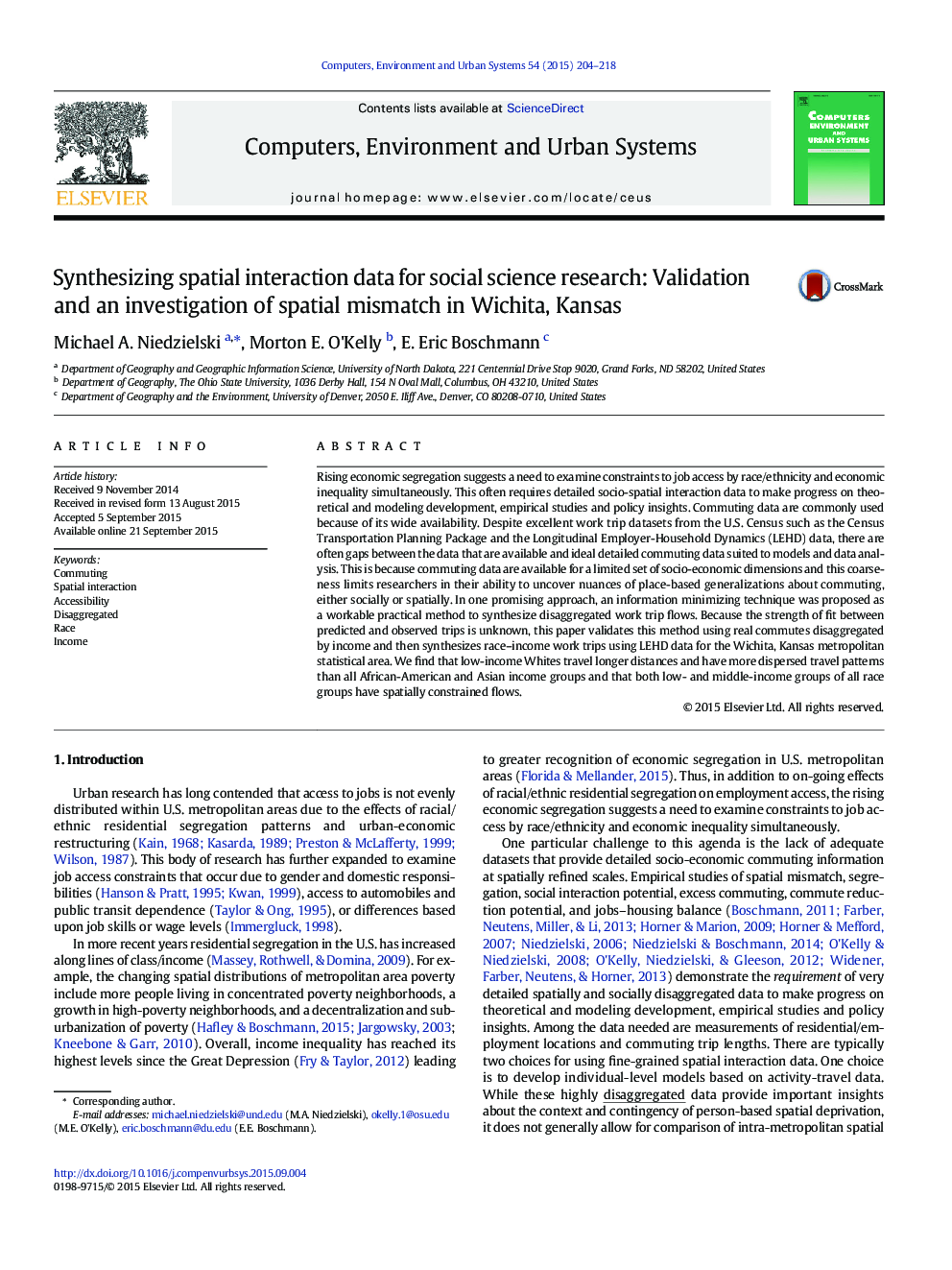| Article ID | Journal | Published Year | Pages | File Type |
|---|---|---|---|---|
| 6921938 | Computers, Environment and Urban Systems | 2015 | 15 Pages |
Abstract
Rising economic segregation suggests a need to examine constraints to job access by race/ethnicity and economic inequality simultaneously. This often requires detailed socio-spatial interaction data to make progress on theoretical and modeling development, empirical studies and policy insights. Commuting data are commonly used because of its wide availability. Despite excellent work trip datasets from the U.S. Census such as the Census Transportation Planning Package and the Longitudinal Employer-Household Dynamics (LEHD) data, there are often gaps between the data that are available and ideal detailed commuting data suited to models and data analysis. This is because commuting data are available for a limited set of socio-economic dimensions and this coarseness limits researchers in their ability to uncover nuances of place-based generalizations about commuting, either socially or spatially. In one promising approach, an information minimizing technique was proposed as a workable practical method to synthesize disaggregated work trip flows. Because the strength of fit between predicted and observed trips is unknown, this paper validates this method using real commutes disaggregated by income and then synthesizes race-income work trips using LEHD data for the Wichita, Kansas metropolitan statistical area. We find that low-income Whites travel longer distances and have more dispersed travel patterns than all African-American and Asian income groups and that both low- and middle-income groups of all race groups have spatially constrained flows.
Related Topics
Physical Sciences and Engineering
Computer Science
Computer Science Applications
Authors
Michael A. Niedzielski, Morton E. O'Kelly, E. Eric Boschmann,
